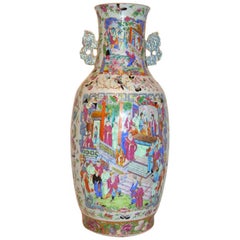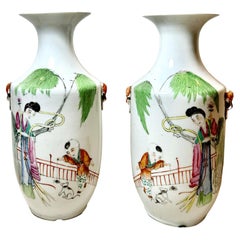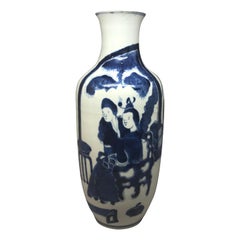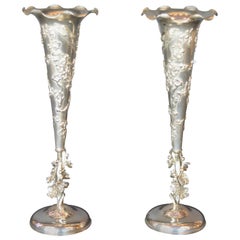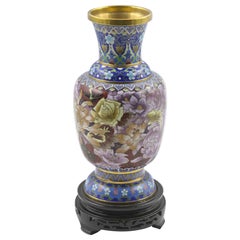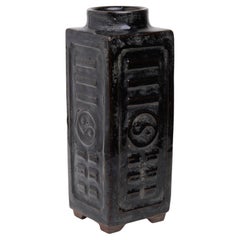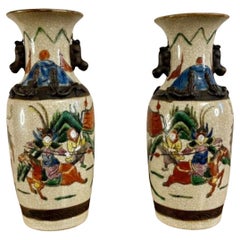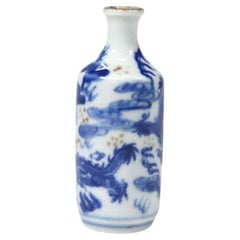Chinese Antique Vase
Early 20th Century Chinese Chinese Antique Vase
Early 1900s Chinese Chinese Antique Vase
Porcelain
Mid-19th Century Chinese Qing Chinese Antique Vase
Porcelain
Late 19th Century Chinese Chinese Export Chinese Antique Vase
Silver
Early 20th Century Asian Chinese Antique Vase
Metal
Late 19th Century Chinese Chinese Antique Vase
Sterling Silver
Early 20th Century Chinese Other Chinese Antique Vase
Porcelain
Early 20th Century Chinese Antique Vase
Ceramic
19th Century Chinese Antique Vase
Bronze
19th Century Chinese Antique Vase
Bronze
19th Century Chinese Antique Vase
Bronze
19th Century Chinese Antique Vase
Bronze
19th Century Chinese Antique Vase
Bronze
19th Century Chinese Antique Vase
Porcelain
19th Century Chinese Chinese Antique Vase
Earthenware
19th Century Chinese Chinese Antique Vase
Porcelain
Late 19th Century Chinese Chinese Export Chinese Antique Vase
Porcelain
Late 19th Century Chinese Chinese Antique Vase
Hardwood
19th Century Chinese Chinese Export Chinese Antique Vase
Ceramic
19th Century Chinese Qing Chinese Antique Vase
Enamel
1830s Chinese Chinese Export Chinese Antique Vase
Pottery
Early 20th Century Chinese Chinese Antique Vase
Ceramic
19th Century Chinese Chinese Export Chinese Antique Vase
Porcelain
Late 19th Century Chinese Chinese Antique Vase
Porcelain
19th Century Chinese Chinese Antique Vase
Enamel
1890s Chinese Antique Vase
Wood, Porcelain
1860s French Chinese Antique Vase
Bronze
Early 20th Century Chinese Archaistic Chinese Antique Vase
Ceramic
1920s English Chinoiserie Chinese Antique Vase
Porcelain
Early 1900s Chinese Chinese Chippendale Chinese Antique Vase
Marble
Early 20th Century Chinese Chinese Antique Vase
Porcelain, Lacquer
Early 1900s English Chinoiserie Chinese Antique Vase
Paper
19th Century Chinese Chinese Export Chinese Antique Vase
Porcelain
Early 20th Century Chinese Chinese Antique Vase
Porcelain
Early 1900s Academic Chinese Antique Vase
Oil
1880s Chinese Chinese Antique Vase
Ceramic
19th Century Asian Chinese Export Chinese Antique Vase
Porcelain
1860s English Chinoiserie Chinese Antique Vase
Paper
1920s Chinese Chinese Export Chinese Antique Vase
Porcelain
19th Century Chinese Chinese Antique Vase
Porcelain
Early 20th Century Chinese Chinese Export Chinese Antique Vase
Ceramic
19th Century Chinese Antique Vase
Porcelain
19th Century French Empire Chinese Antique Vase
Porcelain
1920s Impressionist Chinese Antique Vase
Gold Leaf
Late 18th Century French Louis XV Chinese Antique Vase
Ormolu
Late 19th Century Chinese Chinese Export Chinese Antique Vase
Porcelain
1880s Chinese Chinese Antique Vase
Ceramic
Early 20th Century Chinese Chinese Antique Vase
Porcelain, Paint
19th Century Japanese Edo Chinese Antique Vase
Porcelain
17th Century Chinese Edo Chinese Antique Vase
Porcelain
Late 18th Century Chinese Chinese Export Chinese Antique Vase
Porcelain
Early 20th Century Asian Chinese Antique Vase
Pottery
Late 19th Century Chinese Chinese Export Chinese Antique Vase
Porcelain
Late 19th Century Chinese Qing Chinese Antique Vase
Porcelain
Late 19th Century Chinese Chinese Antique Vase
Porcelain
1860s Chinese Chinese Antique Vase
Porcelain
Late 19th Century Chinese Chinese Antique Vase
Porcelain
19th Century Chinese Chinese Antique Vase
Porcelain
1920s Chinese Art Deco Chinese Antique Vase
Wool
Early 20th Century Chinese Chinese Antique Vase
Bronze
- 1
- ...
Chinese Antique Vase For Sale on 1stDibs
How Much is a Chinese Antique Vase?
- 1stDibs ExpertApril 5, 2022A Chinese vase with a dragon typically means good fortune and prosperity. Throughout East Asia, the dragon is a symbol of luck. In China, the mythical beast is a common motif used in the designs of pottery, furniture and art. On 1stDibs, find a range of Chinese vases.
- How do you identify an antique vase?2 Answers1stDibs ExpertAugust 17, 2021To tell if a vase is antique, look for a mark on the bottom of the vase either a NIPPON mark or an overmark over the original maker’s mark.1stDibs ExpertAugust 24, 2021The easiest way to identify an antique vase is to check for logos, artist's name or signature at the bottom. These marks may be painted, inked or inscribed. You can also check the edges to identify an antique vase — they are generally more smooth and polished than the rest of the piece. Find an extraordinary collection of antique and vintage vases and vessels on 1stDibs.
- 1stDibs ExpertNovember 4, 2024To identify antique Chinese furniture, look carefully at its details. Chinese craftsmen often built furniture using mortise and tenon joinery, eliminating the need for nails and screws. If you see this type of hardware, your piece is likely not at least 100 years old, especially if the hardware still looks new and shiny. Since antique furniture was handmade, you will normally see slight imperfections, such as tool marks or slight variations in carvings. Pieces that appear completely uniform and pristine are less often genuine antiques.
When present, maker's marks can also be helpful. Research the marks to learn more about when the maker was active and producing pieces like yours. Alternatively, you can have a certified appraiser or experienced antique dealer evaluate your furniture for you.
Shop an assortment of antique Chinese furniture.  PAGODA REDOctober 7, 2020
PAGODA REDOctober 7, 2020To determine the age of a Chinese furniture piece, look carefully at the joinery and finish. Natural expansion and contraction of the wood over time will cause a joint to protrude or retract, distorting a once-seamless fit. Antique lacquer finishes become crackled and worn over time. Areas of exposed wood, such as the underside of a table, the footrest of a chair, or the back of a cabinet should appear raw and dry compared to the finished surface. With use, the legs of tables and chairs become weathered near the bottom from precipitation and use.
 Lotus GallerySeptember 23, 2020
Lotus GallerySeptember 23, 2020The best way to know is to take it to an expert, such as an appraiser, reputable dealer or auction house, or museum
- 1stDibs ExpertApril 5, 2022The best way to identify an antique porcelain vase is to check for a maker’s mark. Gently flip the vase over and look for a signature or logo on the bottom. You may also find the name of the artist or designer. Old vases were also made in wood-based kilns, so an antique vase will likely have small imperfections such as coarseness, crackling or asymmetry. When in doubt, work with a certified appraiser to determine the authenticity of your vase. On 1stDibs, you’ll find a variety of expertly vetted antique porcelain vases.
- 1stDibs ExpertApril 5, 2022There are a few ways to tell the approximate age of a porcelain vase, including identifying the maker's mark. These are usually located on the bottom of the vase. The maker's mark can help you find the era of manufacture once you know the company or studio that produced the piece. Look for imperfections, which were inevitable with wood-fuelled kilns of the past but uncommon with modern gas-fuelled kilns. On 1stDibs, shop a collection of antique porcelain from some of the world's top sellers.
